View the spoiler for my guess at what I think it might be, but please first come to your own conclusion before looking at mine — I don’t want to bias your guess.
My guess
Psilocybe cyanescens
They were found in mid-november in the Salish Coast region of Cascadia. They were growing out of woodchips composed of a mixture of western hemlock (majority), and western red cedar.
Side view of one full mature specimen:

A group with a sample of the substrate (the cap appears to be umbonate):

A closeup side view, and internal view of the stem (it appears to be hollow):
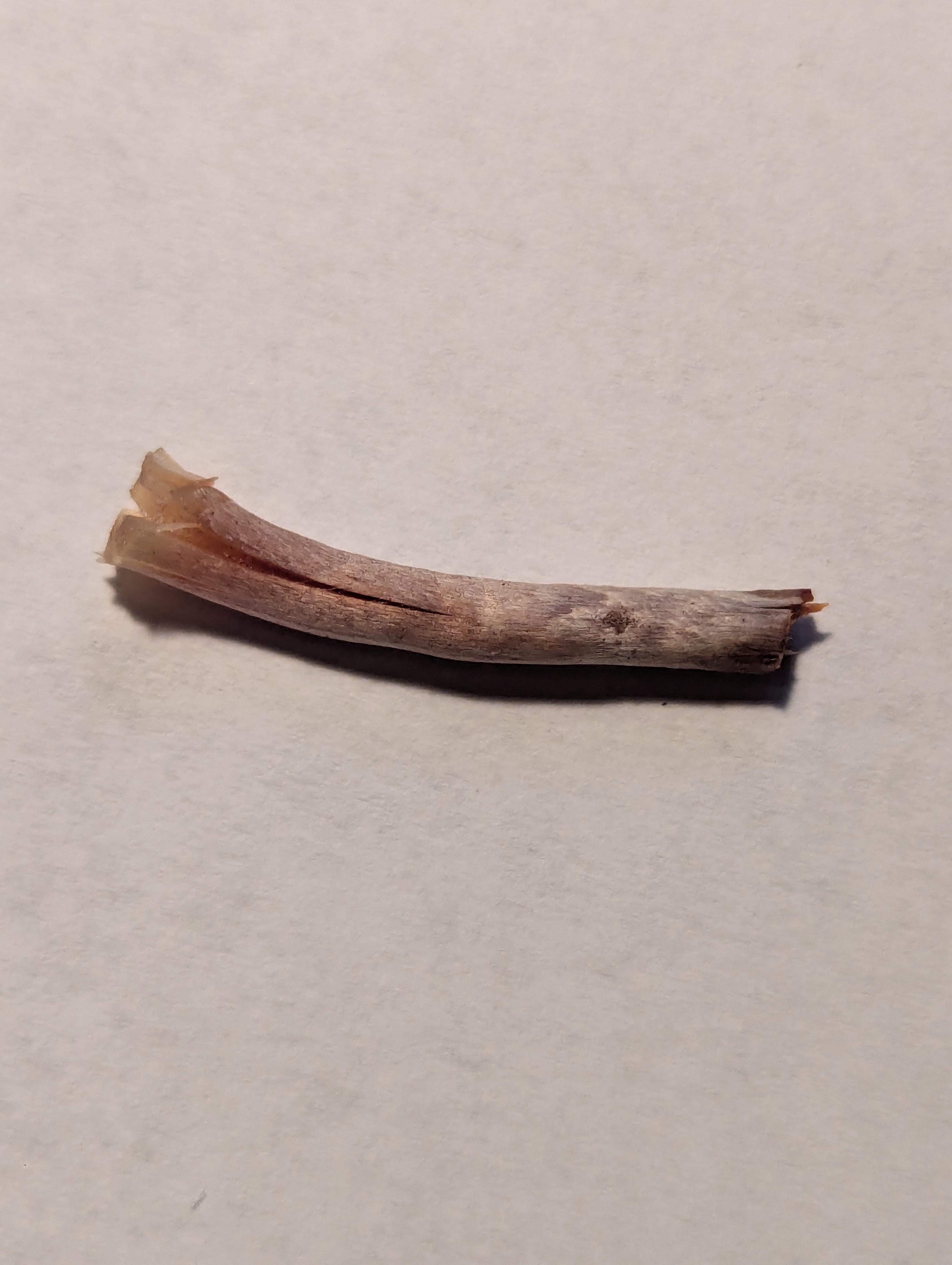
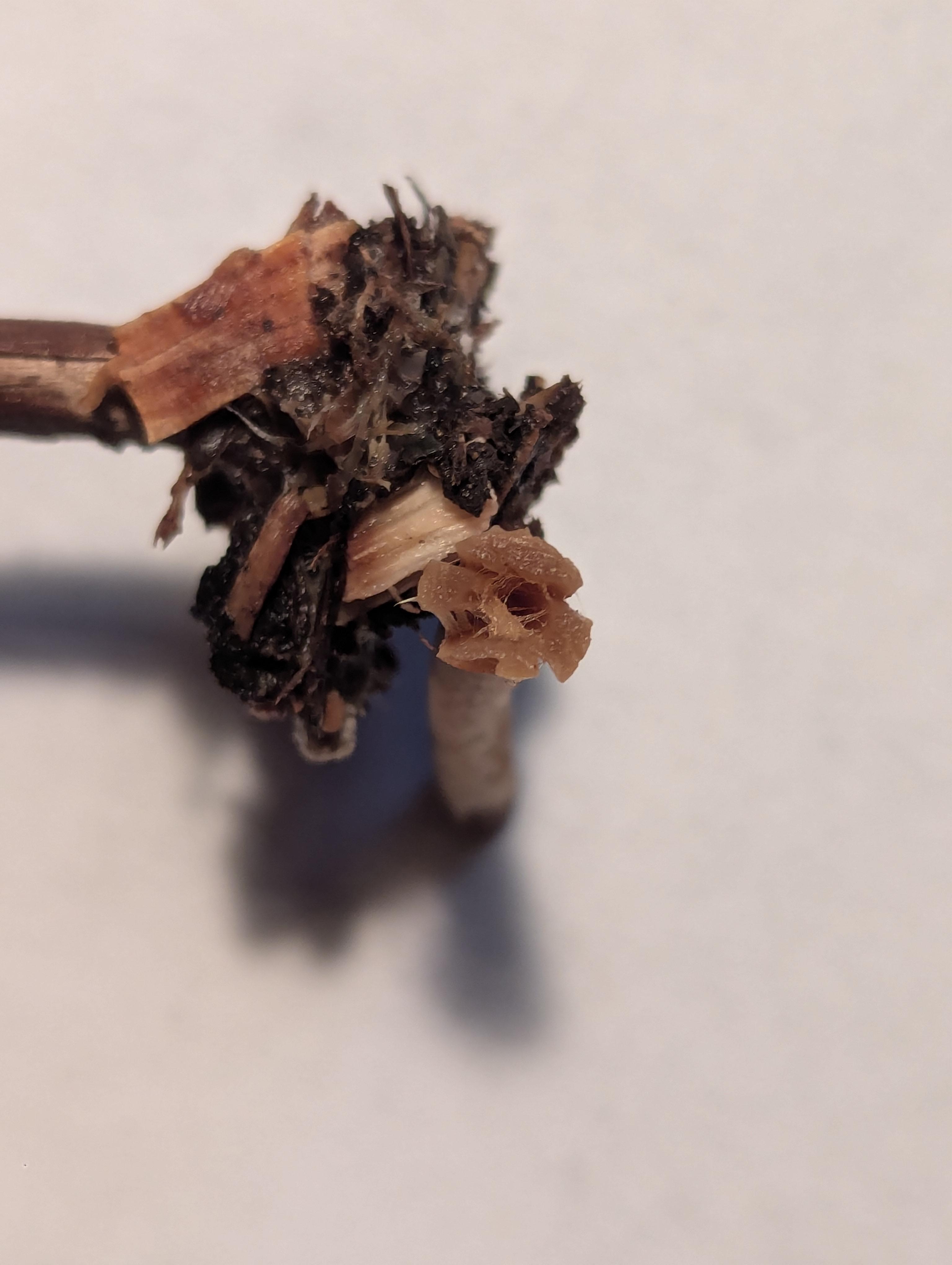
Cross section of the gills — they appear to be adnate, or sub-decurrent:
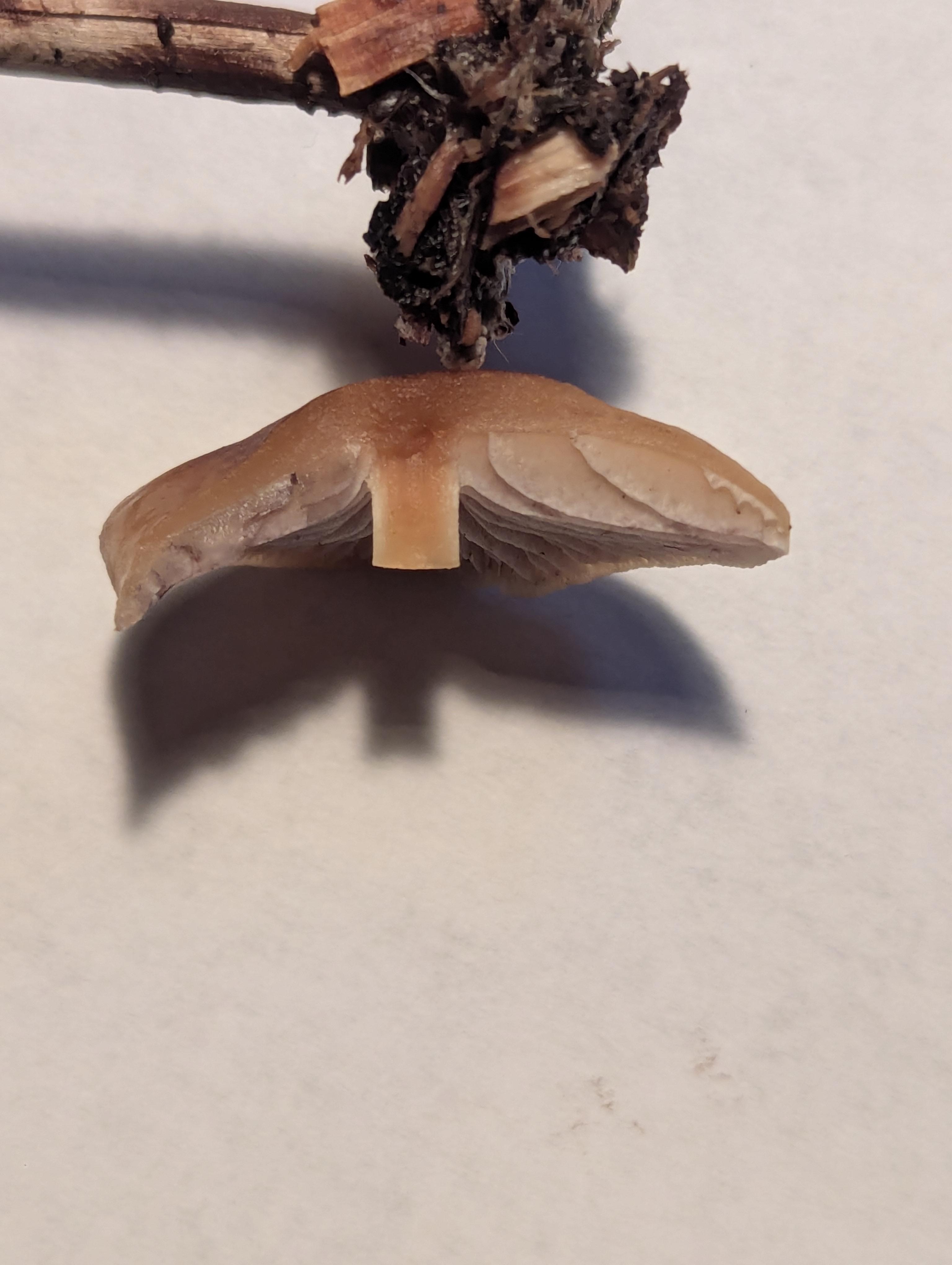
Underside of view of the gills:
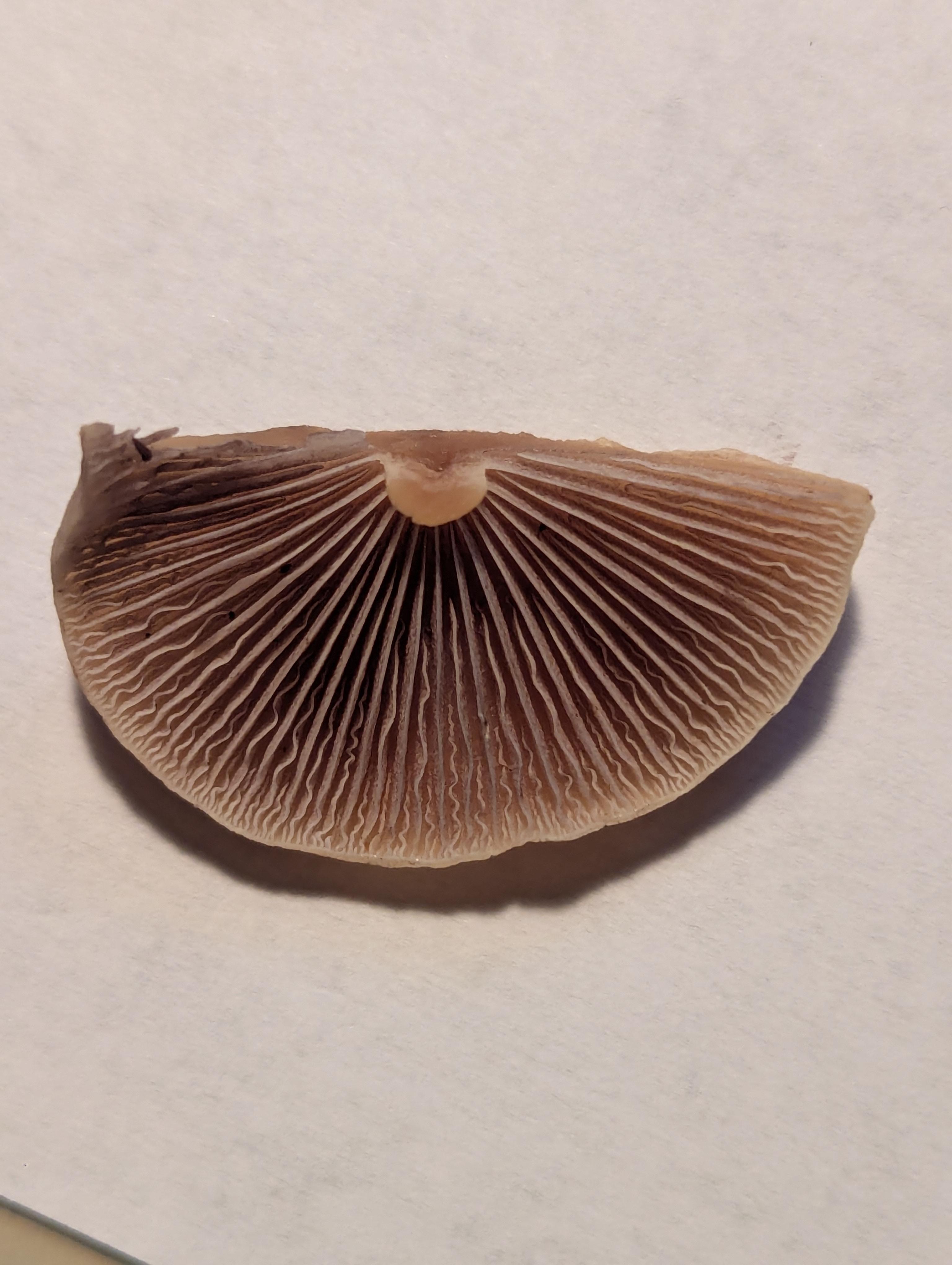
Spore print (first on white background (the split is due to two halves), second on a black background):
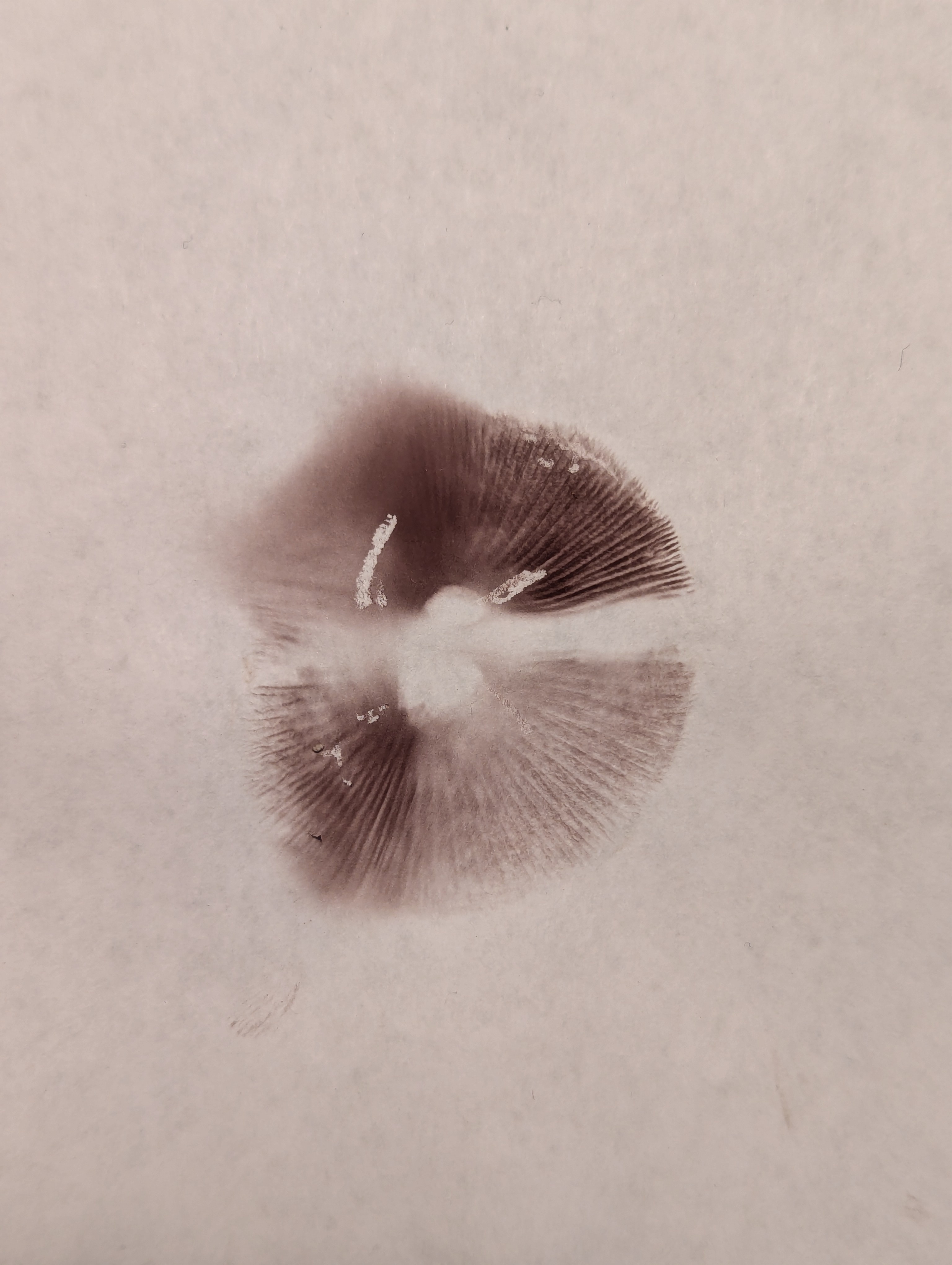
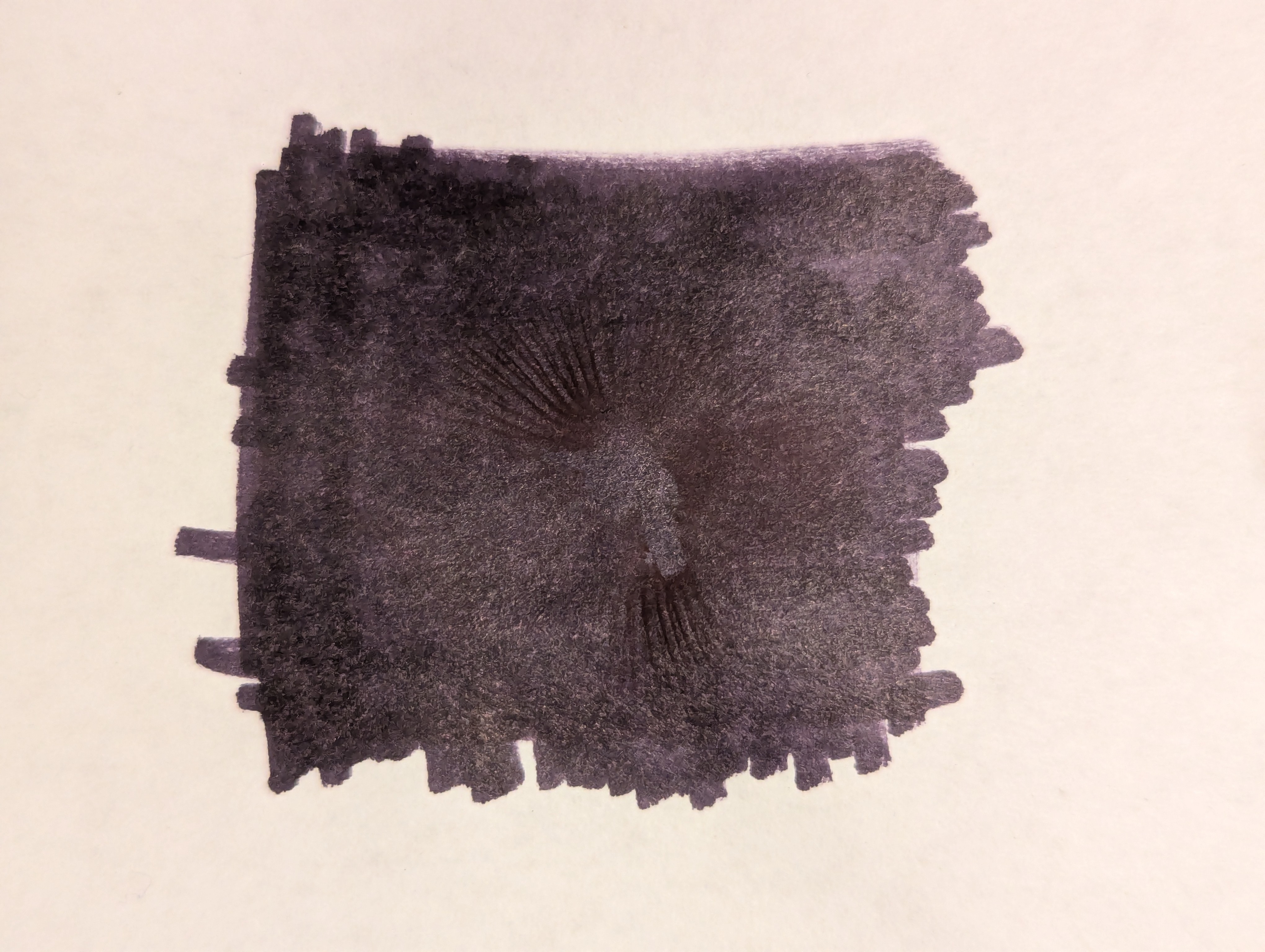
Examples specimens once dried:
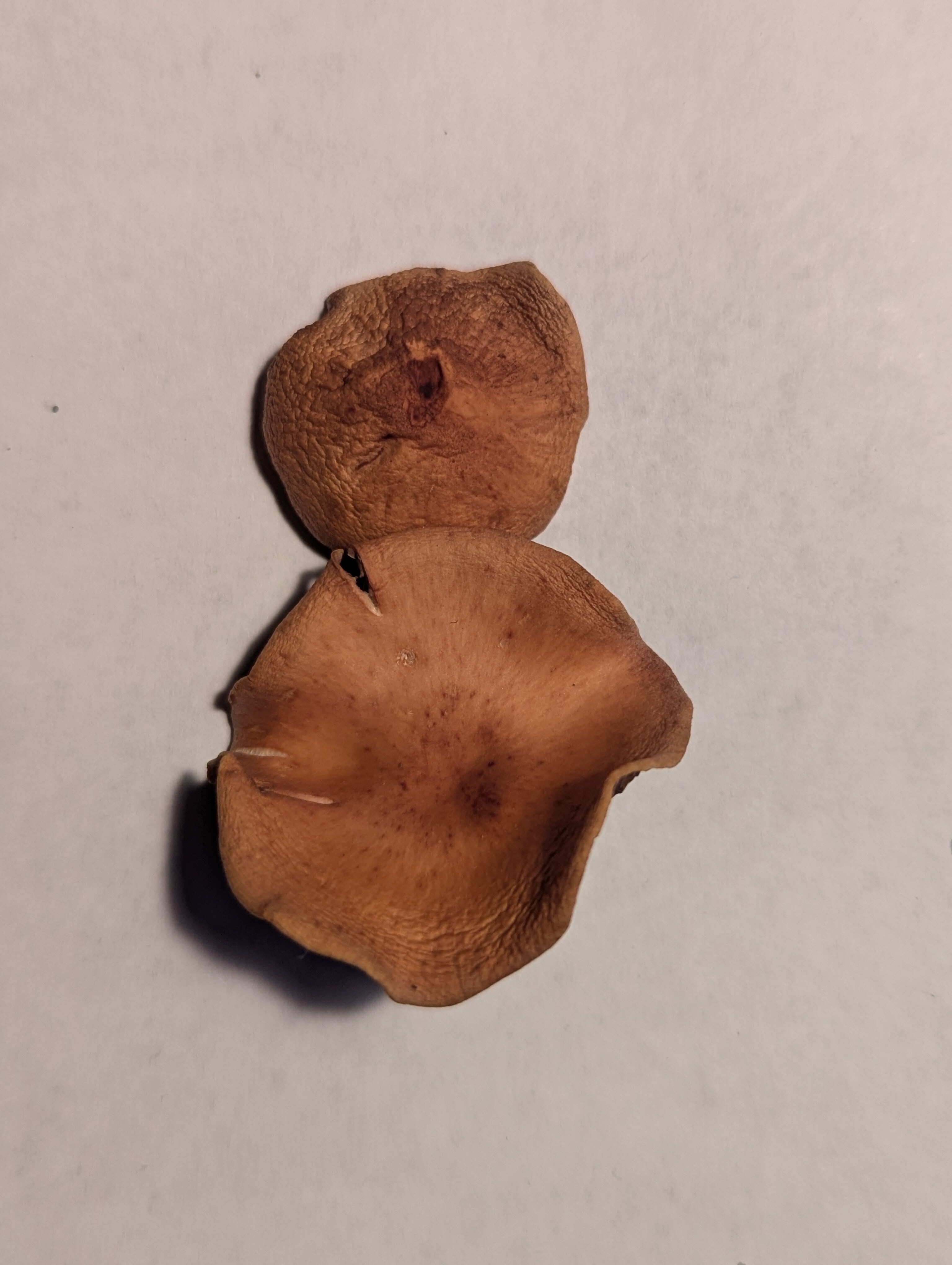
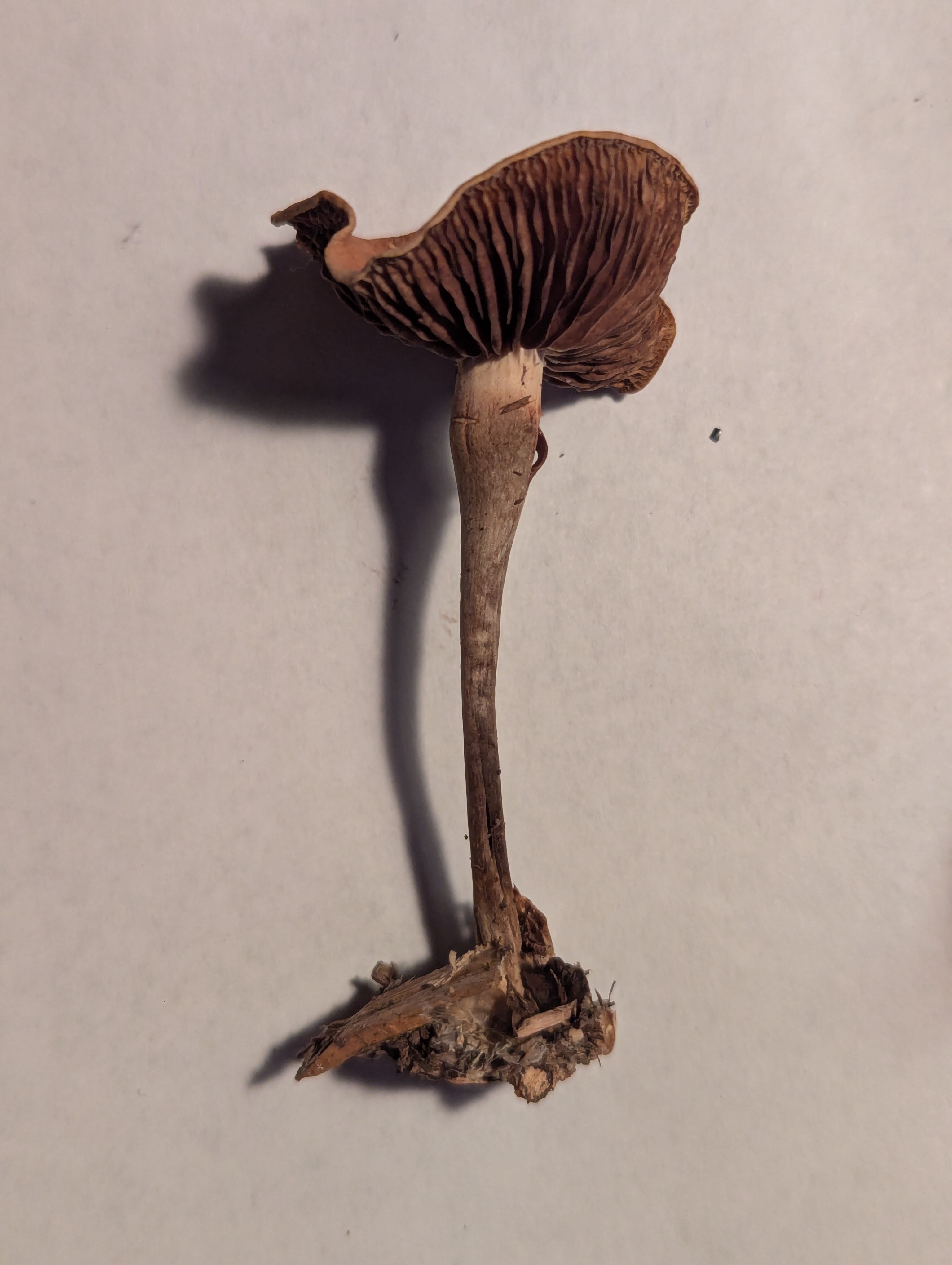
Examples of the colony, and the location/substrate in which it was growing:
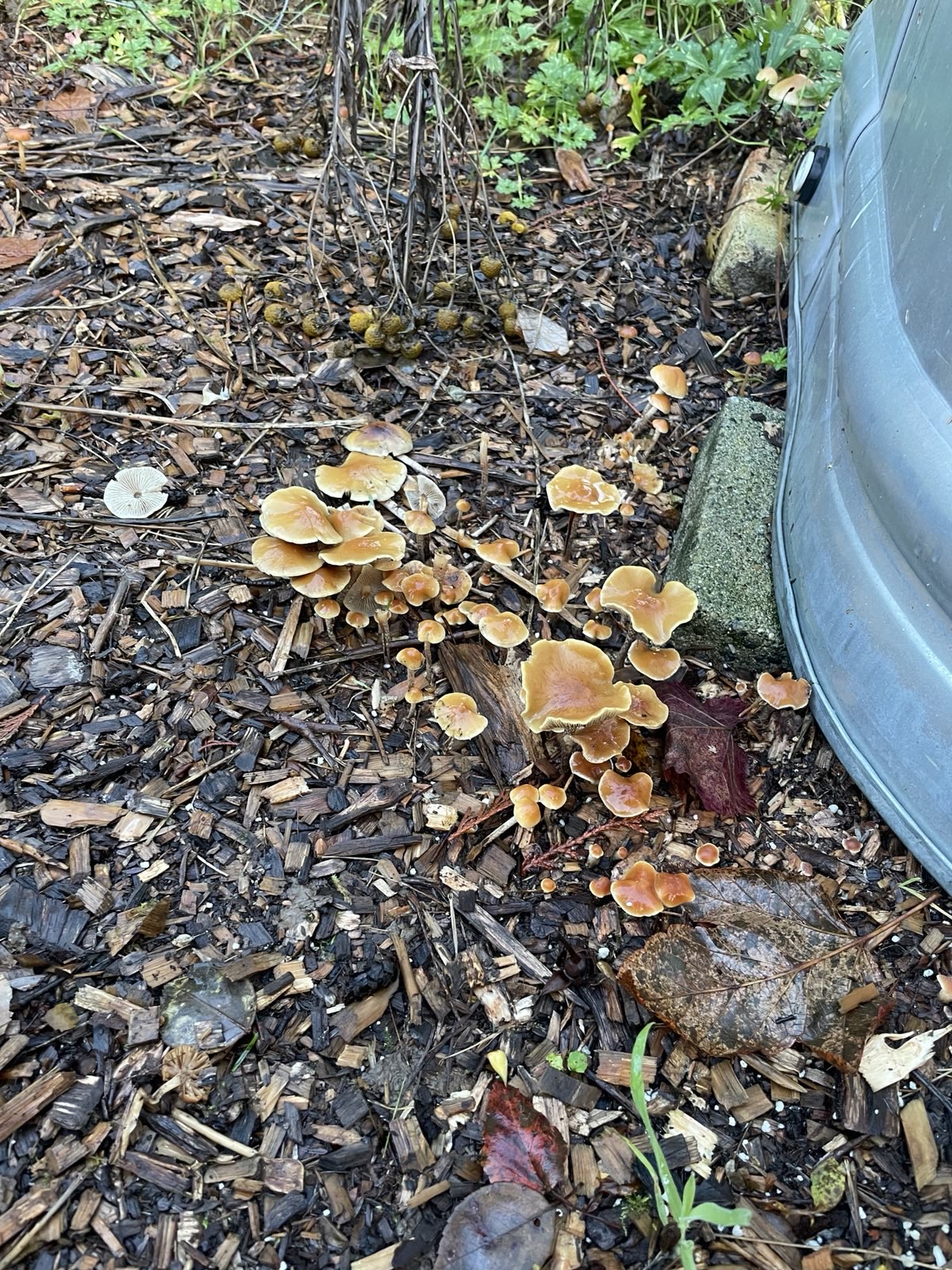

Cross-posts:

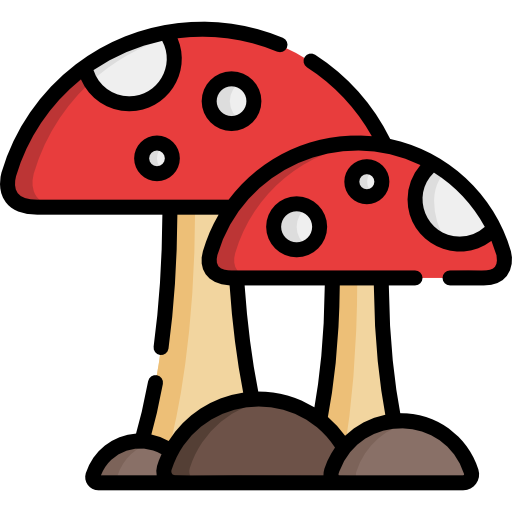
I’m saying some mushrooms cannot be identified from photographs, you have to be able to smell, taste, touch, or otherwise interact with the mushroom in person (one mushroom I know of requires hearing!). This is a death-blow to the idea that you can just identify mushrooms from pictures on the internet. Of course some mushrooms cannot even be identified with all of those things, you have to take a spore print and then view the spores under a powerful microscope and be able to measure the spores. Even then some mushrooms cannot be identified to species without a DNA analysis.
Out of curiosity, where would one look for the database of DNA sequences of things like mushrooms to compare, if one was able to sequence the DNA of a sample that they wish to identify?
the only people I have known to do this are research scientists at universities who join in the forays, I don’t have access to their tools and I doubt you do either (unless you happen to be a scientist at a research university).
If one doesn’t possess the equipment and they wish to sequence DNA, presumably there is somewhere where one could send a sample and pay to have someone sequence it. This thread talks about that.
As a side note, interestingly, it does seem within the realm of possibility for someone to purchase the tech required for sequencing the DNA. On Ebay, for example, I see lab equipment for that purpose at around 500$USD (of course not including any other materials required for the process).
Very interesting! Which mushroom is that?
I forget the species name now, it launches its spores and you can put it up to your ear and hear the popping sounds.
Neat! Let me know if you remember it 😊
For clarity, when I said “describe these qualities” I wasn’t meaning only using photographs. There could be many means of describing the qualities of an object. For example, when you said
There is something that is being sensed that can be documented and/or described — after all we are sensing the quality ourselves. One could try describing textures and tastes, or, perhaps, for greater specificity, a chemical smell or taste signature could be recorded and documented for reference.
I’m obviously not saying that these are things one should be expected to learn or do in the wild for any practical foraging purpose, nor am I saying that it’s an efficient means of learning things, but I think that it is possible to accurately document and describe traits to successfully identity a mushroom without requiring an in-person course. But, of course, it also comes down to knowing what to look for, and where to look.
yes, I think with experience you could describe the taste and get to know it well enough, but I think a complete beginner won’t learn from books and internet forums alone to be able to positively identify mushrooms (I mean, maybe some mushrooms - like chicken of the woods, but I’m thinking of gilled mushrooms in particular). How would you know what one kind of bitter is like vs another without having had the experiences in a foray where someone brings you a bitter mushroom to try and anchor your future experiences by.
You have to remember that mistakes can be quite costly, so it’s more important to take seriously learning the right ways and having good knowledge. This is part of why it’s worth insisting that beginners should go and learn from experts in-person. I’m all for book learning, you should do that too, it’s just not enough for this kind of activity.
I do at least completely agree with you that pure book knowledge isn’t sufficient — one needs a means of comparing their identification with something that can positively confirm the identification’s accuracy. I think we just differ in that you believe that the only means of doing this is through an in-person meetup with a mycologist, whereas, while I agree that that is likely the most efficient, there are other feasible means of arriving at a confirmation; the most extreme of which would likely be something like sequencing the DNA of the mushroom, for example.
I’m still just not super convinced that a large portion of the issue simply isn’t in the quality of the descriptive information that is available generally available.